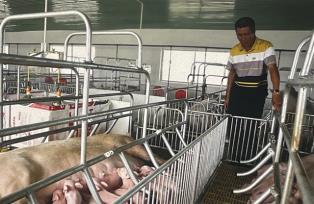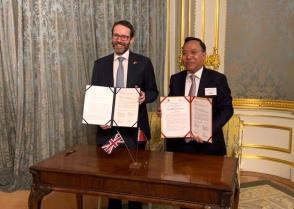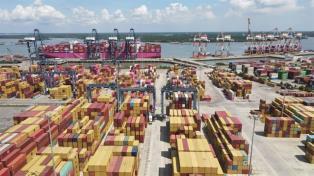Lack of construction materials threatens to stymie key HCM City infrastructure works
A surge in demand for construction materials is putting pressure on major infrastructure projects across HCM City.
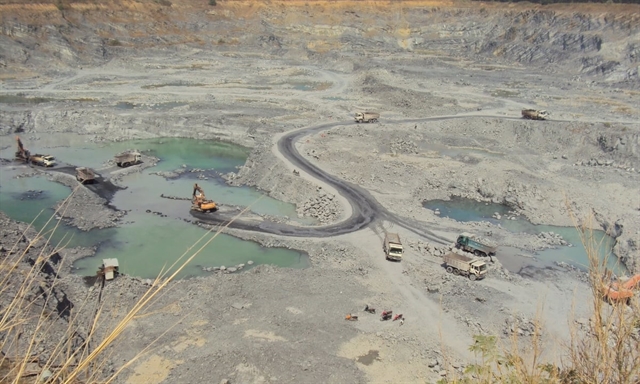
HCM CITY — A surge in demand for construction materials is putting pressure on major infrastructure projects across HCM City.
The demand is particularly acute for key items such as crushed stone, sand and land-filling soil, all essential for transport projects like Ring Road No 3, the HCM City–Thủ Dầu Một–Chơn Thành Expressway and regional linkages vital for the southern economic corridor.
Many contractors are facing severe material shortages.
A representative of the Đại Phong Infrastructure Construction JSC said several critical infrastructure works are under way, notably sections of the ring road and dredging and reinforcement of the Cái Stream, but the supply of crushed stone meets only around 30 per cent of the company’s requirements.
This shortage, coupled with rising prices, is affecting both the financial stability and progress of the projects.
Some concrete suppliers, struggling to source stone, are unable to fulfil technical and supply requirements, further straining the construction schedule.
The material crunch is not isolated and similar difficulties are emerging for national-level projects such as the HCM City–Thủ Dầu Một–Chơn Thành Expressway and the Thủ Biên Bridge–Sài Gòn River section of Ring Road No 4.
These play a central role in enhancing east-west connectivity, linking the Cái Mép–Thị Vải port complex, Long Thành International Airport and the Central Highlands.
It is estimated that they will require some 10.6 million cu.m of filling soil, 3.5 million cu.m of stone and 830,000 cu.m of sand.
Faced with escalating costs and slow supply, Đèo Cả Group has called on local authorities to expand available sources and consider allowing the reuse of soil generated from agricultural land upgrades as filling material.
According to Dương Hoài Thanh, deputy general director of the company, this approach, which has been adopted in several expressway projects, would help ease the shortage while bringing down costs and ensuring construction timelines are met.
Data from the HCM City Department of Agriculture and Environment shows that in the former Bình Dương Province alone, 31 valid extraction licences remain active over an area of nearly 900ha.
Total reserves of stone, sand and filling soil exceed 322 million cu.m, with crushed stone accounting for around 17 million cu.m annually, meeting nearly 80 per cent of the city’s current requirements.
But the actual volume mined is only 60-70 per cent of designed capacity.
The situation is particularly concerning for sand and filling soil.
Over the next 18 months sand supply for filling purposes will likely reach only 1.575 million cu.m, a fraction of the total demand of nearly nine million cubic metres.
Filling soil supply is estimated to fall short by more than nine million cubic metres, with supply only at around six million cubic metres.
Deputy director of the city Department of Agriculture and Environment, Nguyễn Ngọc Thúy, said Government bodies and localities are reviewing regulatory bottlenecks in land use, environment, transport, licensing, and construction to expedite procedures for expanding extraction capacity and opening new quarries.
The aim is to ensure that large-scale works proceed on schedule without being derailed by resource shortages, she said.
For crushed stone, the city is preparing to implement the 2024 Law on Geology and Minerals by demarcating areas not subject to auction and holding public auctions for mining rights at sites approved by the erstwhile provinces of Bình Dương and Bà Rịa – Vũng Tàu.
These auctions are expected to be completed by the fourth quarter of 2025.
Authorities are also urging that procedures for increasing extraction depth and capacity at existing mines be prioritised and resolved promptly.
To address the shortfall in sand for land filling, the city plans to use materials obtained by dredging the Thị Tính River in Bình Dương and reservoirs in Bà Rịa – Vũng Tàu.
These are anticipated to run into volumes of several million cubic metres in 2025–30.
Contractors are being encouraged to explore alternative supplies from the Mekong Delta and import sand from Cambodia to reduce dependency on a limited number of sources.
For land-filling soil, the Department of Agriculture and Environment will work with relevant units to survey potential reserves in hilly and other terrains.
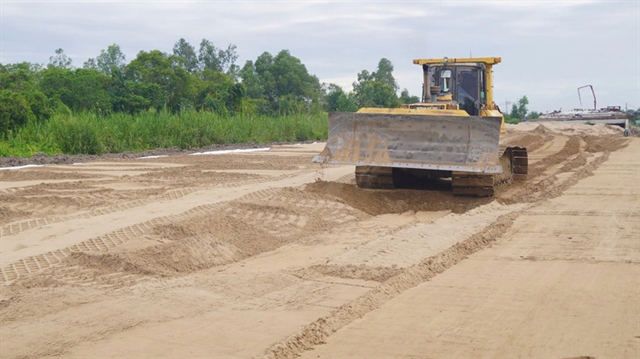
It also plans to organise auctions for mining rights.
Authorities are also looking to recover and utilise soil from urban site clearance and quarry operations to meet the shortage.
The Department of Construction has been assigned to monitor and announce price and quality indexes for building materials while tightening oversight to prevent speculation and price manipulation.
It is also studying the viability of crushed manufactured sand to meet part of the natural sand demand.
Investors and contractors are advised to establish long-term sourcing strategies, reserve materials at construction sites and adopt modern building technologies to optimise efficiency and minimise environmental impacts.
In the long term the city wants ministries and other government agencies to increase the use of alternative materials such as ash, slag and synthetic resources in accordance with Government directives.
This shift would contribute to reducing pressure on natural mineral resources and support a more sustainable construction sector.
Securing adequate and sustainable material supplies quickly is becoming a critical factor in HCM City’s infrastructure development.
With project values running into the trillions of đồng — for example, Ring Road No 3 alone is estimated to cost over VNĐ75 trillion (US$2.95 billion) — ensuring a stable supply chain for essential materials is not only a logistical challenge but a strategic imperative for the southern economic powerhouse. — VNS

